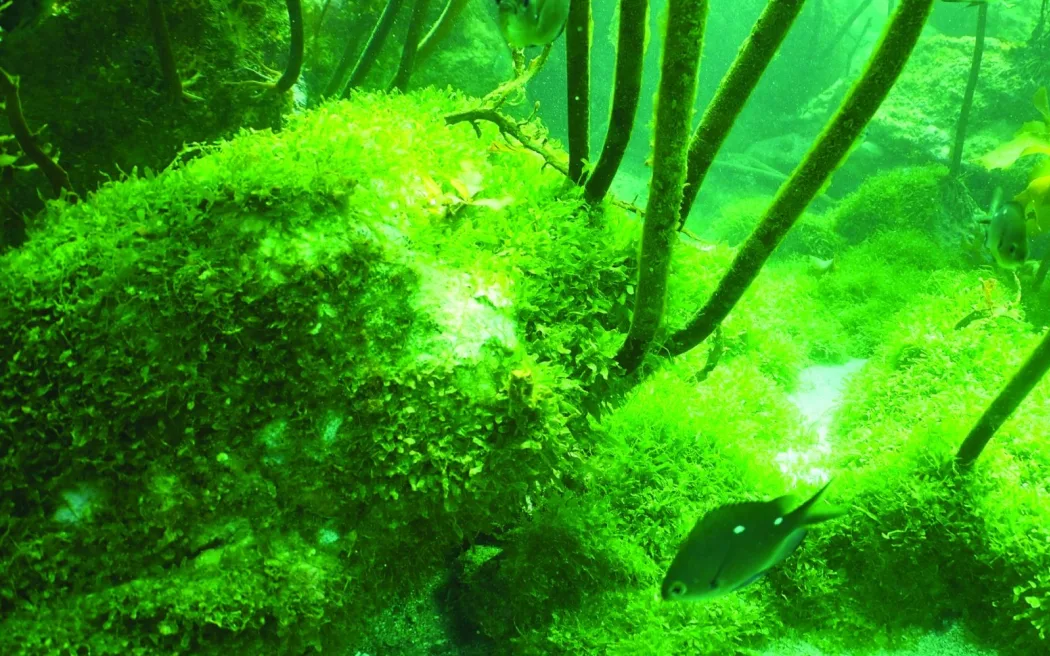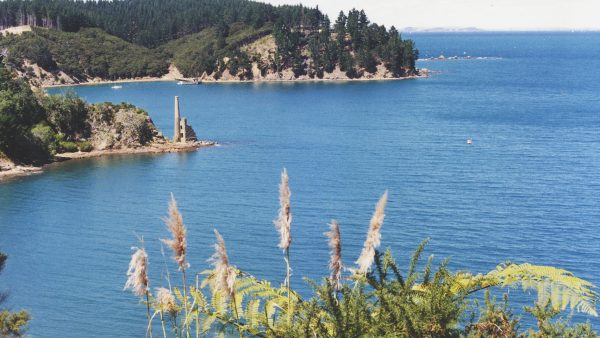In the ongoing battle against the invasive seaweed Caulerpa on Aotea, more than 300 instances of vessels violating Controlled Area Notices (CANs) have been reported over the past three summers, John Walsh, Biosecurity New Zealand’s response director told AoteaGBI.news.
The statistics highlight a significant challenge in the fight to prevent the spread of this aquatic pest, which poses a threat to local marine ecosystems.
The CAN, enforced by Biosecurity New Zealand in partnership with Auckland Council and mana whenua, prohibits anchoring, fishing, and other activities that could disturb the seabed and spread Caulerpa. Despite the strict regulations, compliance has been a major issue, with education being the primary tool for addressing breaches.
“Our preferred approach for non-compliance is to start with education, aiming to inform the local community and visitors about the risks associated with Caulerpa and the importance of following the CAN,” Walsh explained.
No prosecutions have been undertaken yet, despite the potential for significant penalties, including fines up to $50,000 for individuals and $100,000 for corporations, or even imprisonment, Walsh concedes.
Caulerpa, discovered in New Zealand at Aotea in 2021, is a fast-spreading seaweed that threatens local marine environments by outcompeting native plants and altering habitats. This invasive species can easily fragment and hitch a ride on anchors, chains, and fishing gear, leading to new infestations far from the original site. “The main way this pest can spread over longer distances is by breaking into small pieces that can then get tangled in anchors, anchor chains, fishing and diving gear, and relocated,” Walsh explains, underscoring the critical need for compliance with CAN regulations.
Despite the daunting challenges presented by Caulerpa, efforts to manage its spread continue. Last week Hauraki Iwi Ngāti Paoa approached carpet maker Bremworth to make wool mats to lay on the sea floor in an effort to smother the fast-growing pest.
In late January, the government-funded Omākiwi Cove Caulerpa trial introduced a new mechanical suction dredge, costing $650,000, which advocates believe could play a role in containing the invasive seaweed.
Walsh however provides a sobering perspective on the future of marine environments subject to caulerpa:
“From the time exotic caulerpa was first found in New Zealand at Aotea in 2021, a group of world experts on exotic caulerpa and its control has said that the scale of the incursion in New Zealand is far beyond that at which successful eradication has ever been achieved anywhere in the world.” Walsh said.
“It is highly likely we will have to live with it and this has been the case from the outset. This doesn’t mean nothing will be done about it. At this point in time, we continue to work with communities and explore options to potentially remove small, newly detected populations or knock back larger areas to try to contain spread, as well as prevent further spread.” he added.







